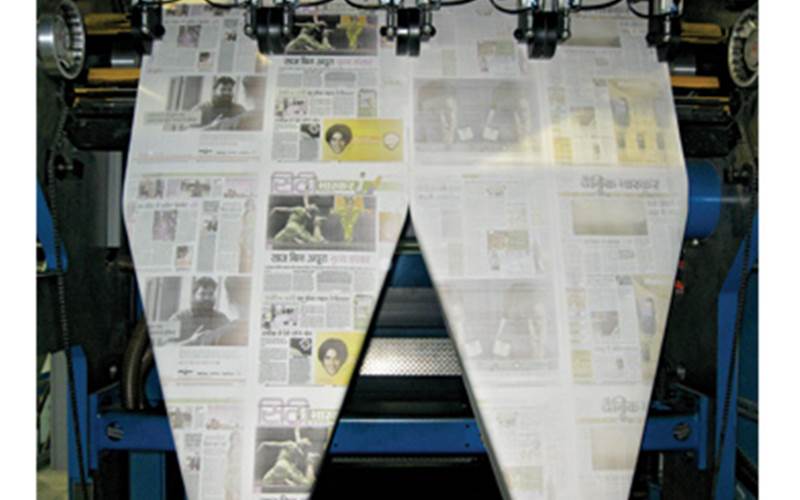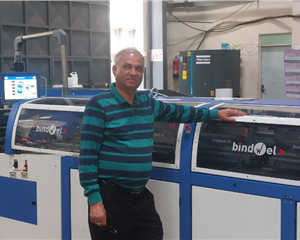Newspapers: still making profits
Ramu Ramanathan investigates whether newspapers continue to remain an advertising power base and how Indian publishers are convincingly creating better opportunities among newer markets
02 Aug 2011 | By Ramu Ramanathan
In addition, segments like education, automobile and lifestyle have shown upside growth. This in spite of the doomsday warnings about a slowdown in the national market when it comes to print advertising.
The other story that emerges from the DB Corp results is: the ad revenue growth for the group’s 62 editions in four languages is being seen in states like Gujarat, Punjab, Madhya Pradesh and Rajasthan. In fact Girish Agarwal, director at DB Corp, has gone on record to say that in one of the newspaper’s traditional markets, the growth for retail is a whopping 34%.
Outstanding outreach
Mera Bharat Mahaan is the new mantra. And Mera Bharat is shining. So, even though DB Corp is postponing its launch in "high-growth" Bihar, it has started to reap benefits in Maharashtra. Only recently, DB launched the Marathi edition of Dainik Divya Marathi in Aurangabad and Nashik. It will be extending this to Jalgaon, Amravati and Akola in Maharashtra.
This is something DB Corp achieved in Gujarat. After Divya Bhaskar’s entry, the market size has increased. That’s because there was a scope to grow, which was tapped. Earlier, the circulation and distribution was restrictive and perhaps inefficient. The Gujarat market was under-developed. Not just that. Available data shows that the reach of electronic players has increased, multifold. But the interesting point is, print has grown along with the expansion of the television medium. In Gujarat, print and television complemented each other.
Hindi print advertising
Meanwhile the other media giant, Jagran Prakashan, the publisher of Dainik Jagran, has got its investment from Blackstone GPV Capital Partners (Mauritius) V-Q Ltd, a New York-based private equity firm. Campaign India readers will recall that a year ago, Jagran Prakashan had announced that Blackstone was investing Rs 225 crores in its holding company Jagran Media Network Investment Pvt Ltd (JMNIPL).
The Rs 225 crore will increase the liquidity of the company and will be used as and when it needs capital for expansion or acquisition. Again, more launches, more editions, more newspapers.
The Jagran group has witnessed growth in advertising revenues due to its regional focus. In FY11, the company saw its revenues increase to Rs 1,090 crore, while net profits expanded 17 per cent to Rs 205.8 crore. Interestingly this is organic growth, without Mid-day Multimedia’s print business, which Jagran Prakashan acquired in May 2010.
The main thing to note is, Jagran Prakashan’s revenues from advertising have shown an over 20% growth, due to increased focus on colour ads. This is something Hindi newspapers like Dainik Bhaskar and Hindustan are able to achieve due to superior technology.
The traction in advertising has been possible due to prudent investments. Massive units in the main cities and a nimble production unit in the Tier-2 and Tier-3 towns where consumption upswing is expected. In the Hindi speaking states, the growth is expected from education, financial services, real estate – plus banking and insurance aided growth.
A FICCI-KPMG report states that advertising premia for English newspapers has contracted. The report states that Hindi print advertising for language newspapers is expected to grow at 15 per cent annually till 2015 (to Rs 7,300 crore), a clear 5 percentage points more than English print advertising market’s growth rate.
Trickle-down effect
This does not hold true of only the big players. News is trickling in from newspaper houses of all formats and ideologies. Telengana Publications has placed an order for seven Orient X-Cel web-offset presses which can produce 36,000 copies per hour. The group who are in the broadcasting business, and have a television channel, T News, launched seven editions of Namasthe Telangana on 7 June.
The main segment of the Telugu daily has 12 pages, plus a 16-page tabloid section, and claims a print run of 750,000-800,000 copies, with editions in six districts apart from Hyderabad, from where it is published.
These are the headlines we are picking up on our newspaper radar. For instance, Kashmir Images, a tabloid from Srinagar, is investing in boosting its circulation of 50,000 copies daily. That’s a 16-page broadsheet with four pages in all colour.
Jacob Mathew heads Wan-Ifra
Jacob Mathew began his term as the president of Wan-Ifra on 1 July. This is Wan-Ifra’s way of acknowledging the clout of the media industry in Asia.
Mathew, who is publisher and executive director of Malayala Manorama, is quite clear when he says: newspapers in India reach the reader "virtually free". He says, "At four rupees a copy for many regional language papers, and less for others, this is cheaper than getting free news on the internet for two hours!"
The great Indian analogy of a newspaper in India costing less than a cup of tea holds true. Mainly because it is good for the reader. The low price, however, does inflate the circulation of some publications because readers buy multiple titles, sometimes for the resale value of the old newspapers, which is unique to India. With costs – newsprint, plus salaries and distribution costs – going up, the current model is not sustainable for many publishing houses.
This could puncture the bullishness and fiscal profits.
Mathew is no Luddite – and he is aware of the changing reality. Which is why when Wan-Ifra will host its trade show in Chennai in September, they propose to host a summit which will address the emergence of business on cross-media advertising, the demands it brings with it, how does the advertiser look at it, how newspaper publishers can offer niche solutions for India.
There will be sessions like the Tamil daily Dinamalar’s work in mobile publishing to Lokmat’s Premier League Cricket Carnival which won the Marathi daily the Wan-Ifra digital media awards in 2010.
And it’s not just cross-media or digital options: traditional print is re-inventing itself.
The Times of India with a daily production of 4.3 million copies, the highest circulation of any English-language, broadsheet newspaper in the world, has invested in its print centres with integrated conveying, stacking and packaging lines.
The same holds true for Matrubhoomi, the second largest Malayalam newspaper in Kerala with a daily edition of 1.4 million printed copies. The group produces and stacks and mails 75,000 copies in its head-office in Kozhikode in north Kerala to the south of the state.
Clearly the mantra is to sustain the profitability; and re-invent the newspaper advertising business model.
And that’s great news.
Public listed newspapers at a glance
DB Corp: DB Corp publishes eight newspaper titles, 62 newspaper editions and 191 sub-editions in four languages Hindi, Gujarati, Marathi and English in 13 states. According to IRS 2011 number their total circulation is 18.1 million. The group has posted a rise in consolidated profit after tax of 17.3% on year-on-year basis to Rs 611 million for the Q1 FY 2011.
Jagran Prakashan: Jagran publishes Dainik Jagran, the Hindi-daily which has 37 editions in 14 states. The group announced a growth of 17.01% at Rs 205.83 crore in the first quarter ending 30 June, 2011. According to the IRS 2011 survey, their total circulation is 5.45 crore.
HT Media: Publishers of Hindustan Times and Hindustan. The group announced a 23% growth in total revenue during the first quarter at Rs 496.9 crore, while net profits recorded a 24% growth at Rs 51.5 crore. HT Media operates 19 printing facilities across India and has a daily circulation of 2.26 million.
Deccan Chronicle: The English-daily newspaper in south India has posted a growth of 7% at Rs 231.83 in the Q1 ending June 30, 2011. Deccan Chronicle has eight editions, which are published from Hyderabad, Vijayawada, Rajahmundry, Visakhapatnam, Anantapur, Karimnagar and Nellore in Andhra Pradesh, Chennai in Tamil Nadu and Bengaluru in Karnataka has a daily circulation of 1,333,668 copies.














 See All
See All